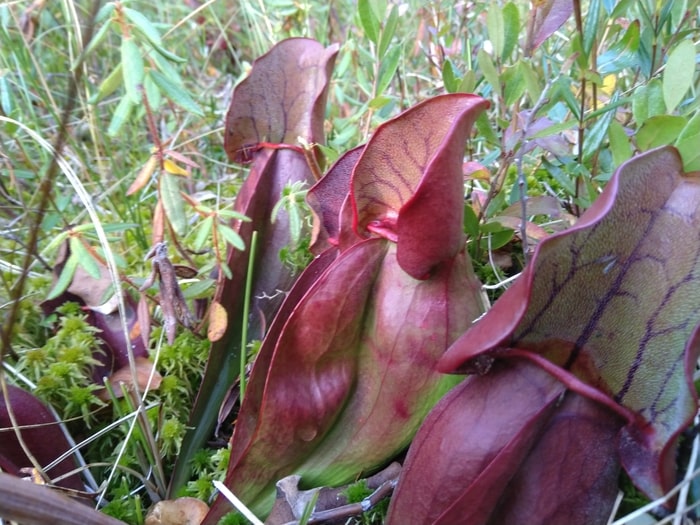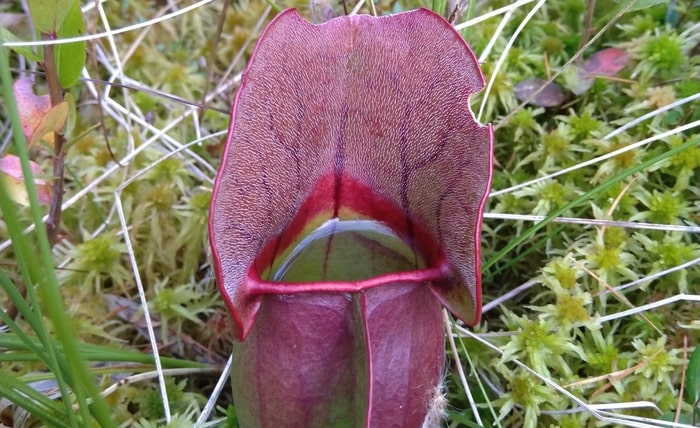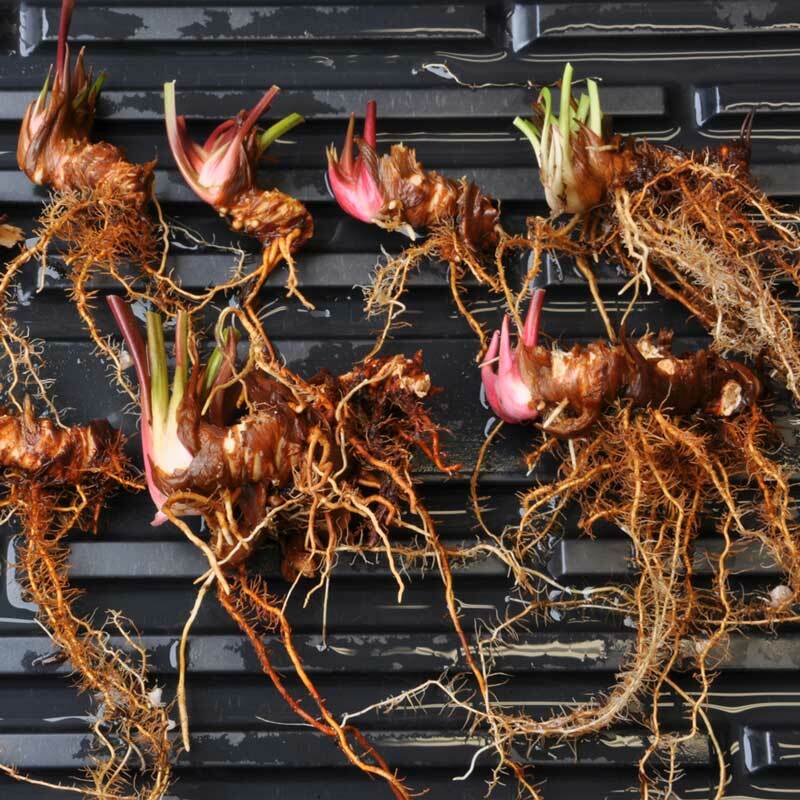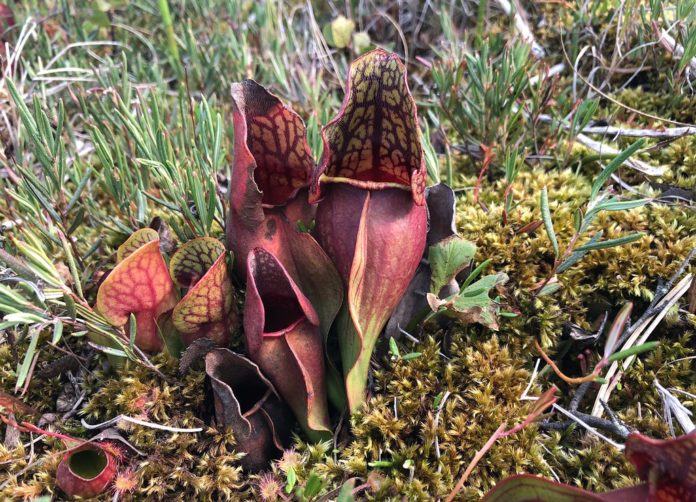

This guide is meant to teach you how to propagate Pitcher Plants (Sarracenia Purpurea) and hopefully make it easier for you to sell them at your own nursery.

Hardiness Zone: 2 – 9

Soil Type: Well-drained to poorly drained acidic loam

Water: Above Average

Exposure: Full Sun to Partial Shade
Pitcher Plants (Sarracenia Purpurea) is a perennial shrub hardy up to zone 2. It’s a carnivorous plant found in peat bogs throughout boreal forests.
Pitcher plants are great additions to gardens and terraces, they’re often used in big city terraces to deal with insects.
Not only will they deal with insects, but they also have beautiful purple colors and bloom a splendid pink flower.
If you have a bog, or a very wet area on your land, pitcher plants can be a great choice.
Wildlife Value
Pitcher plants bring great wildlife value for insects, having them on your land will increase biodiversity.
While they do eat insects, they also have symbiotic relations with other insects.
Pitcher plants will attract a variety of arthropod species who feed on the insects caught within the pitcher, and in exchange, fertilize the pitcher plant with excrements.
Additionally, some spiders will spin webs at the entrance of the pitchers to catch insects coming in.
Best Way to Propagate Pitcher Plants
Division
The most efficient way to propagate pitcher plants is by division. Generally, the best time of the year to divide is during Springtime.
Pitcher plants naturally grow in thick bunches and spread by rhizomes. Because of this, it’s pretty easy to just dig out the pitcher plant from the moss and split it into many plants.
- First, find a big mother plant, if not in a store, you can find them in peat bogs.
- Inspect to see if the mother plant has made clones, usually mother plants are bigger and have flower stems. Smaller pitcher plants nearby are likely linked underground by rhizome to these mother plants.
- If the mother plant doesn’t clone out nearby, you can also dig her out and divide her.
- Next, separate the clones by cutting the underground rhizome that link them, or divide mother plant into clumps, each with roots.
- Transplant them into a mix of sphagnum moss peat and perlite.
- Cut the remains of the old pitchers, (they die and wither every season).
- Water thoroughly and check for any fungal infection or plant rot.
- Pitcher plants divided this way takes about a year until they’re fully recovered.
Note: Not all divided plants need to have a flower stem, even taking a large enough ‘blind’ rhizome and potting it can work.

If you don’t have access to pitcher plants, you can order bare-root rhizomes online here at grow carnivorous plants.
Sowing
Another way to propagate pitcher plants is from seeds, although this is for the ones who have time and patience. Growing sarracenia from seed into a mature plant can take up to 4 years.
Still want to grow from seed? Take a look at the in-depth sarracenia sowing guide at the carnivorous plant society.
How to Care for the Pitcher Plants
Sarracenia purpurea is sensitive to the water you use, minerals found within the water can throw off their balance.
Pitcher plants are used to collecting rainwater in the wild, so you should water with pure water only.
Pot up your established plants in a mix of sand and peat moss. Then plant them just so the rhizome is sitting just on top of the medium and the roots are underground.
Add some sphagnum moss to act as a natural mulch.
Next, place the potted pitcher plants in some tubs or trays so the extra water drains below but stays there for humidity.
Finally, place them in an area of your nursery where moisture is high and rainwater is abundant.
That’s it!
Still not sure where to start on your plant nursery? Check out of Plant Nursery Guide!

